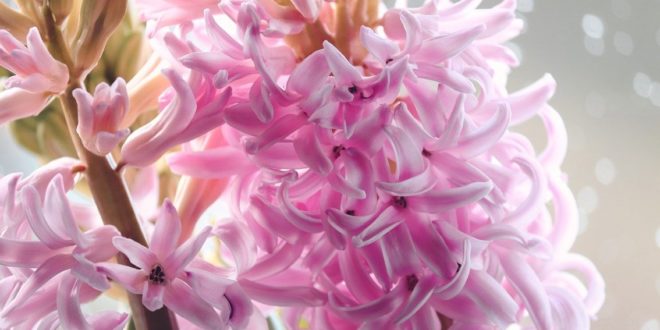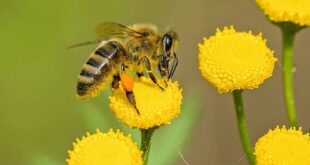Spring is just around the corner, and one of the joys of the season is when the earthy winter damp at last gives way to fragrant garden delights. If you want to experience a floral perfume-hit at home, head to the garden centre now to snap up plants that will burst into bloom as the weather starts to warm up. They include both potted bulbs and showy shrubs – and we have a few suggestions you may not have heard of.
The more well-known scented bulbs are hyacinth, jonquil, and freesia. While they are an absolute joy, and always appreciated, there are other, more-demure, or perhaps just a touch more sophisticated, and certainly worth the effort of growing. Modest muscari (commonly known as ‘grape hyacinth’) is among them.
Muscari come in a range of colours most gardeners are unaware of. With their fruity fragrance, these sweet little flowering bulbs produce blooms in blue, white, lavender, pink and green. They look best when planted in clusters around beds of shrubs, setting off the likes of dwarf azaleas, or nestled into a rockery where elevated height can help show them off. They can be picked as cut flowers, and displayed in miniature vases with a few of their bright green leaves to set them off.
Tulips are best known for their shape and colour, yet there are a few fragrants in the family that deliver up citrus and honey notes. Interestingly, fragrant tulips are usually orange or apricot in tone, and they tend to flower earlier in the season (although there are some mid-season ones, too). Fragrant tulips come in singles and doubles, and some are very full.
Fragrant tulips can be used to advantage along the edges of paths, under opening windows, or as cut flowers in a vase. Tulips often ‘bow’ soon after being picked, but can be kept looking perky in a vase with high sides, or by popping around their stems a piece of clear plastic tubing (of the sort that often found on florist-purchased gerbera). If you don’t have any ‘recycled’ tubes at home, they can be purchased here.
Among spring-flowering scented shrubs, one which is often over-looked is dainty, evergreen Azara microphylla (also called the ‘vanilla tree). Upright in habit, it can grow (slowly) to 3 metres in height, however it is more often trimmed into a bush or hedge, which is why many prefer to regard it as a shrub. In spring, this evergreen plant produces masses of very small, vanilla-perfumed, daffodil-yellow flowers. While it enjoys full sun, it will also tolerate dappled light (which is why it is so often found growing at a back porch entrance way). To help release it’s perfume, plant your vanilla tree close to a walkway where brushing against it will help release its fragrance.
Grown for their showy spring blooms, camellias are not usually planted, firstly, for their fragrance. Several varieties of this pretty shrub, however, are perfumed. They are the result of efforts made in the early 1960’s to breed for this attribute from Camellia lutchuensis. The resulting hybrids usually display small flowers on an open-growing shrub.
Although lilacs are among the most perfumed of spring shrubs, they are not commonly found in gardens. The reason for this is, perhaps, because they tend to be a little unruly in their habit, and also because their frothy white, mauve and purple blooms do not last long in a vase. However, once you have encountered the fragrance of lilac, you will not want to be without it.
If you are a ‘tidy’ gardener, grow lilac at the back of a perennial border, against a wall where it can be tied up if necessary. Its early blooms will be a focus until later flowering plants come into bloom, and once the lilac flowers are spent, the shrub’s vibrant light-green leaves will form a delicious backdrop to the garden.
However you do it, be sure to purchase your fragrant plants now, so come spring, your garden is a fragrant delight!










Join the Discussion
Type out your comment here:
You must be logged in to post a comment.